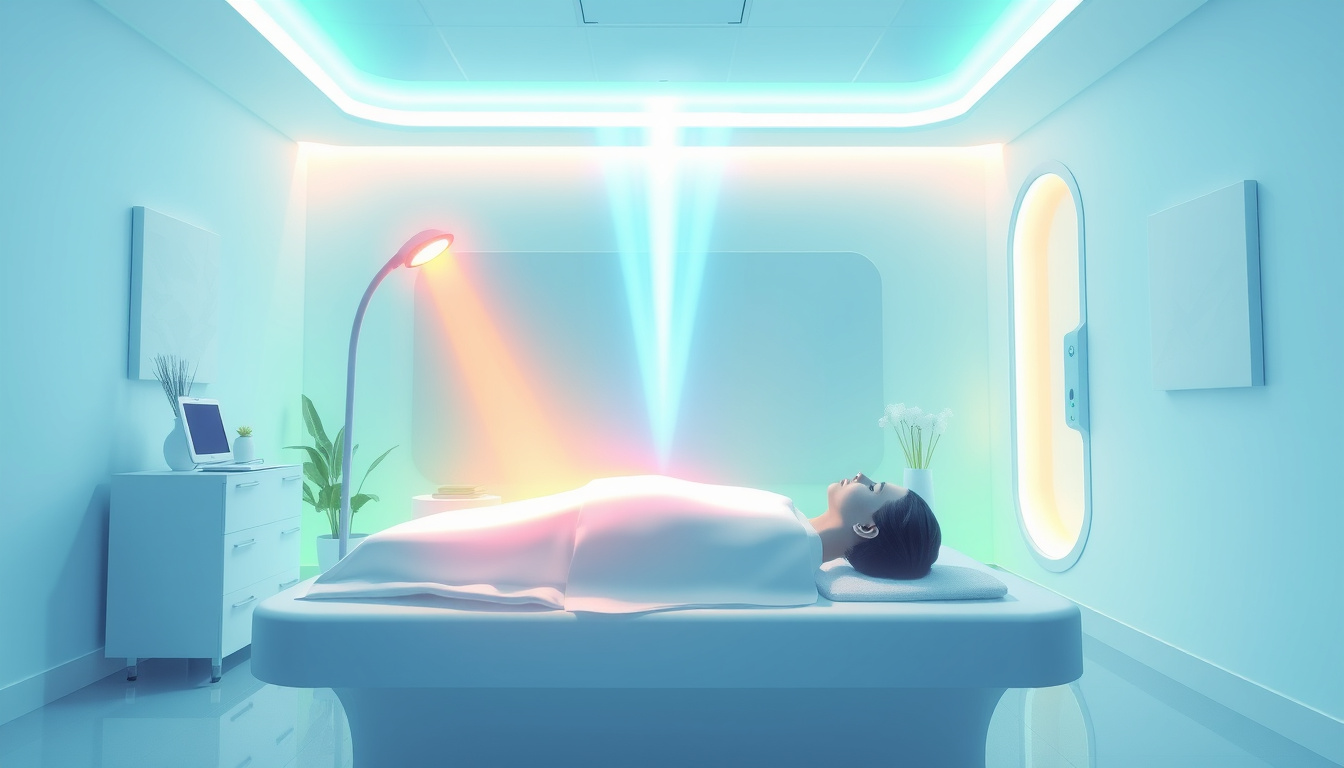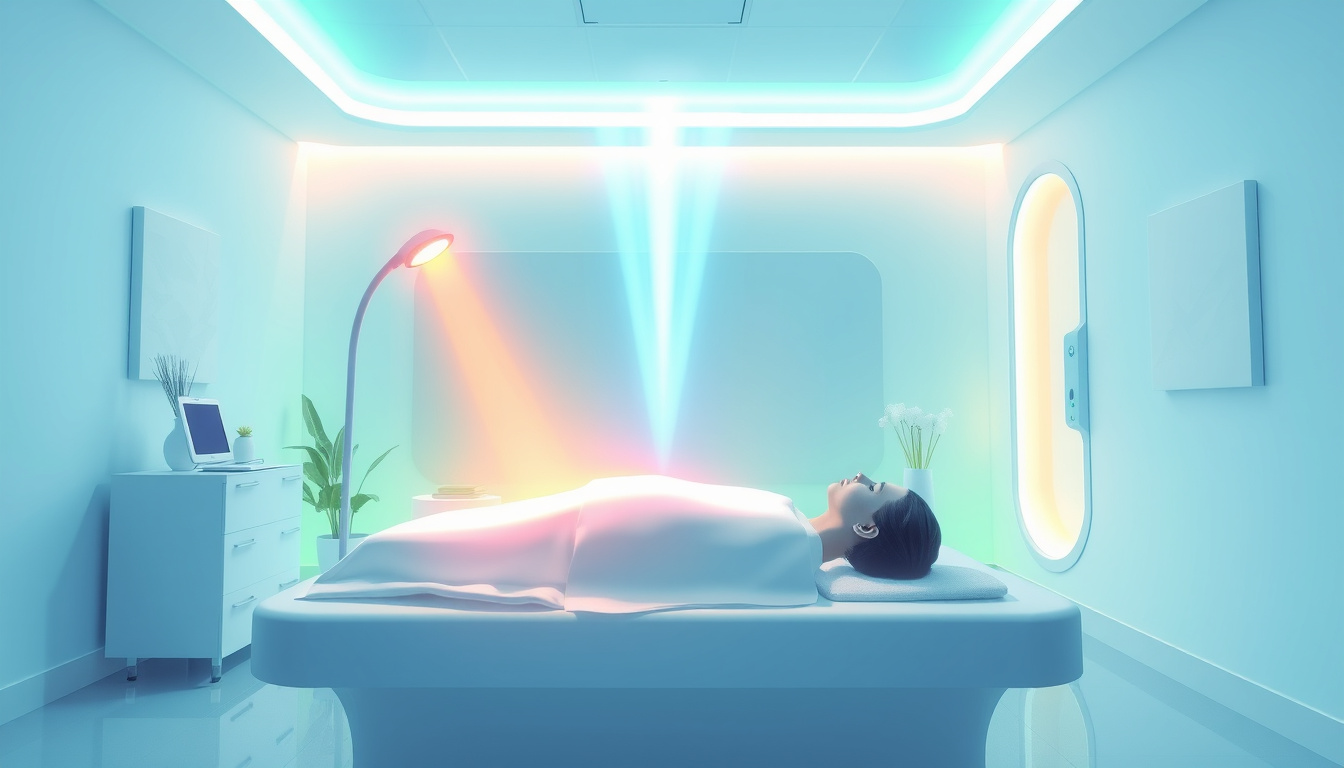
25 Mar Unlocking the Power of Cold Laser Therapy: A Comprehensive Guide to Low Level Laser Light Therapy Benefits
In recent years, cold laser therapy, also known as low level laser light therapy (LLLT), has gained significant attention as a non-invasive treatment option for various health conditions. This innovative therapy harnesses the power of low-level lasers to stimulate healing within the body without causing any pain or discomfort. Whether you’re dealing with chronic pain, sports injuries, or skin conditions, understanding the principles and benefits of cold laser therapy can greatly enhance your quest for alternative healing solutions. In this comprehensive guide, we will explore the science behind cold laser therapy, its wide-ranging applications in medicine, and how to choose the right practitioner for your needs.

Key Takeaways
- Cold Laser Therapy, also known as Low Level Laser Light Therapy, utilizes low-intensity lasers to promote healing.
- The therapy works by stimulating cellular function, enhancing circulation, and reducing inflammation.
- Key benefits of Cold Laser Therapy include effective pain relief, accelerated tissue repair, and improved mobility.
- It has diverse applications in medicine, from treating chronic pain to aiding wound healing and managing sports injuries.
- When seeking Cold Laser Therapy, it’s important to choose a qualified practitioner to ensure safety and effectiveness.
What is Cold Laser Therapy?
Cold Laser Therapy, also known as Low Level Laser Light Therapy (LLLT), is a non-invasive treatment method that utilizes specific wavelengths of light to stimulate cellular processes, promote healing, and alleviate pain. This innovative therapy employs low-intensity lasers or light-emitting diodes (LEDs) that do not produce heat, making it a painless procedure that can be applied to various conditions. Since its introduction, Cold Laser Therapy has gained popularity in fields such as physical therapy, sports medicine, and pain management, providing patients with a drug-free option to recovery. By enhancing circulation and reducing inflammation at the cellular level, LLLT can help accelerate tissue repair and promote healing, making it an attractive choice for those seeking relief from chronic pain, injuries, or post-operative recovery. Understanding the mechanisms and benefits of this cutting-edge therapy can empower individuals to explore new avenues for their health and wellness.
How Cold Laser Therapy Works: The Science Behind the Healing
Cold Laser Therapy, also known as Low Level Laser Light Therapy, is a non-invasive treatment that utilizes specific wavelengths of light to promote healing and relieve pain. The therapy works by delivering low levels of laser light directly to the affected tissue, which penetrates the skin to ignite a series of biological processes at the cellular level. When the light hits the cells, it stimulates the mitochondria – the powerhouse of the cells – facilitating increased ATP (adenosine triphosphate) production. This boost in energy enhances cellular metabolism, leading to improved tissue repair, reduced inflammation, and accelerated healing of wounds and injuries. Additionally, Cold Laser Therapy influences pain receptors, effectively diminishing the sensation of pain without the side effects associated with pharmaceuticals. It has demonstrated effectiveness in treating a variety of conditions, including chronic pain, arthritis, and sports injuries, making it a versatile option in modern therapeutic practices. As interest in holistic and alternative medicine grows, understanding the science behind Cold Laser Therapy can empower patients to make informed decisions about their health and wellness.
‘The future belongs to those who believe in the beauty of their dreams.’ – Eleanor Roosevelt

Benefits of Cold Laser Therapy: Pain Relief and Beyond
Cold Laser Therapy, also known as Low Level Laser Light Therapy (LLLT), is an innovative treatment that utilizes specific wavelengths of light to penetrate tissues and promote healing. One of the primary benefits of Cold Laser Therapy is its effectiveness in providing pain relief, making it an excellent choice for individuals suffering from chronic pain conditions such as arthritis, fibromyalgia, or sports injuries. By stimulating cellular repair and reducing inflammation, this non-invasive therapy aids in the body’s natural healing processes. Beyond pain relief, Cold Laser Therapy offers additional benefits including improved circulation, enhanced tissue repair, and reduced muscle spasms. It is also a promising option for those looking to accelerate recovery post-surgery or injury. As more healthcare professionals recognize the potential of this technology, patients are increasingly turning to Cold Laser Therapy for a holistic approach to improving their overall well-being and quality of life.
Applications of Low Level Laser Light Therapy in Medicine
Low Level Laser Light Therapy, commonly referred to as Cold Laser Therapy, has seen increasing applications across various fields in medicine due to its ability to promote healing and reduce pain. This non-invasive treatment utilizes low-intensity lasers or light-emitting diodes (LEDs) to stimulate cellular processes without causing thermal damage to tissues. It is widely used for managing musculoskeletal conditions such as tendonitis, arthritis, and back pain, providing relief while enhancing recovery. Additionally, Cold Laser Therapy has shown promise in treating skin conditions, including wounds and scars by promoting collagen production and reducing inflammation. Notably, its applications extend into dentistry, where it’s utilized for pain management and tissue regeneration following surgical procedures. As research continues to unfold, the therapeutic potentials of Low Level Laser Light Therapy are broadening, making it a valuable tool in modern medical practices.

Safety and Side Effects of Cold Laser Therapy
Cold Laser Therapy, also known as Low Level Laser Light Therapy (LLLT), is increasingly recognized for its therapeutic benefits in managing pain, promoting tissue healing, and reducing inflammation. However, like any medical treatment, it is crucial to discuss the safety and potential side effects associated with this therapy. Cold laser therapy is considered non-invasive and painless, generally posing minimal risks; however, some individuals may experience mild side effects such as temporary redness or irritation at the treatment site. These effects are typically short-lived and resolve quickly. It’s essential for patients to consult with a healthcare professional before starting treatment, especially those with underlying conditions or those who are pregnant. Overall, the safety profile of Cold Laser Therapy is robust, making it an appealing option for those seeking relief from chronic pain or injuries without the need for medication or invasive procedures.
Choosing the Right Cold Laser Therapy Practitioner
When it comes to choosing the right practitioner for Cold Laser Therapy, also known as Low Level Laser Light Therapy, it’s vital to consider several key factors to ensure you receive safe and effective treatment. Start by looking for licensed healthcare professionals with specialized training in the use of cold laser equipment. Check their credentials and experience specifically in cold laser therapy, as this will enhance your confidence in their expertise. Additionally, seek practitioners who utilize FDA-approved devices, as these guarantee a standard of safety and efficacy. Reading patient reviews and testimonials can also provide insight into the practitioner’s approach to care and treatment outcomes. Moreover, a consultation can help you gauge their knowledge about your specific condition and how cold laser therapy may benefit you. Ultimately, finding a qualified practitioner who understands your needs will significantly enhance your experience and results with cold laser therapy.

Sorry, the comment form is closed at this time.